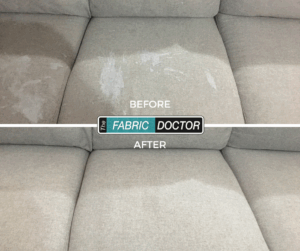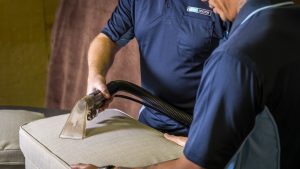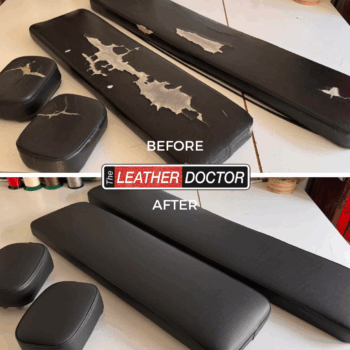How to Choose the Right Fabric Protection Method for Your Needs
When it comes to preserving the beauty, comfort, and longevity of your upholstery and soft furnishings, professional fabric protection is essential. Every day life exposes fabrics to spills, stains, sun damage, and general wear. Without proper protection, these issues can quickly deteriorate the appearance and texture of your furniture.
That’s where our Fabric Doctors can help. Our expert technicians use professional-grade fabric protection treatments to keep your upholstery, curtains, and soft furnishings looking newer for longer, saving you time, effort, and money in the long run.

Why Fabric Protection Matters
Your furniture and soft furnishings are an investment in your home’s comfort and style. Without protection, even a small spill can cause a lasting stain. Professional fabric protection adds an invisible barrier that helps resist spills, dirt, and fading, all while keeping your fabrics breathable and soft to the touch.
Fabrics That Benefit Most from Protection
Different fabrics have different needs, and our fabric protection solutions are tailored to suit each one:
- Natural Fibres – Cotton, linen, wool, and silk are absorbent and prone to staining. Professional protection helps prevent spills from soaking in.
- Synthetic Fabrics – Polyester, nylon, and acrylic resist stains better but can still trap dirt. Protection keeps them cleaner and fresher for longer.
- Blended Fabrics – A customised protection plan ensures each fibre type is properly shielded.
- Upholstery Fabrics – Couches, chairs, cushions, and drapery benefit greatly from a professional treatment that extends their life and appearance.
Why Choose Professional Fabric Protection?
While there are DIY fabric sprays available, they often don’t deliver the same long-term results or safety guarantees as professional fabric protection treatments. At The Fabric Doctor, we use high-quality, industry-approved products that are safe, effective, and tailored to your specific fabrics.
Our experts can assess your upholstery and recommend the best method, whether it’s a stain-resistant coating, UV protection, or water-repellent treatment, ensuring superior coverage and lasting results.
Get Peace of Mind with The Fabric Doctor
Choosing The Fabric Doctor means choosing protection, performance, and peace of mind. Our technicians are trained specialists who understand how to care for every fabric type, from delicate silks to hard-wearing upholstery.
Don’t risk your investment with off-the-shelf solutions or guesswork. Let the professionals handle it.
Protect your furniture against spills and stains
Extend the life of your upholstery
Maintain your home’s fresh and clean look year-round

Get a Free Quote Today
Ready to protect your furniture the right way?
Contact The Fabric Doctor today for expert advice and a free, no-obligation quote.
Keep your home beautiful. Trust The Fabric Doctor to care for your fabrics like they deserve.
Links:
https://myleatherdoctor.com.au/fabric-doctor-services/fabric-cleaning-stain-removal/
https://myleatherdoctor.com.au/professional-fabric-cleaning-protection/
https://myleatherdoctor.com.au/fabric-doctor-services/fabric-cleaning-stain-removal/
https://myleatherdoctor.com.au/household-furniture/







